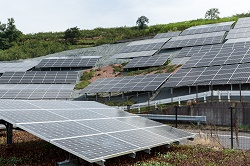Efficient, organic photovoltaic cells for indoor and outdoor applications
Over its three years of intensive research, the ARTESUN consortium had a single objective: the development of high performance materials enabling cost-effective, non-vacuum production of OPV modules boasting an efficiency of over 15%. These modules had to allow for arbitrary size and shape to make their use possible across a large panel of applications. In a press release published in late December 2016, project partners announced that they successfully realised several types of organic solar modules using newly-developed roll-to-roll (R2R) additive non-vacuum coating and printing techniques. Thanks to the combination of novel active layer and electrode materials with coating and module interconnection techniques, small and large area demonstrators of various shapes and size could be demonstrated, targeting three different sectors and applications. Of one these three use cases consisted in the production of RFID tags where the battery pack is replaced by an organic solar module with a size comparable to that of a credit card. The module powers all wireless communications between the RFID tag itself and its reader, along with the integrated sensor device. Cars and buildings are two applications of choice for this novel device. ‘Auxiliary electronics including energy storage in form of a supercapacitor and overvoltage protection are integrated to the RFID tag to secure the operation up to one day during poor light conditions,’ the press release reads. ‘The tag can sense the indoor surrounding temperature, which is monitored wirelessly with a handheld reader. Outdoors, a vehicle can be identified wirelessly with a fixed reader from a reading distance increased by a factor of 10 when utilising solar power compared to passive mode operation.’ A second use case was presented in the form of a flower-inspired flexible organic solar antenna module. Built using gravure printing, the module is able to power a radio and an environmental sensor in a distributed wireless sensor network. It has been optimised to operate under low or varying light intensities which, according to the consortium, makes it suitable for remote, autonomous precise environmental monitoring in agricultural applications. Finally, the team successfully developed large area modules and assembled them in a glass-based facade element for use in building integration. The BIPV (Building-integrated photovoltaics) element of 1610mm x 380mm can be integrated as a ventilated façade within well-defined structural elements. ‘Potential market acceptability, in terms of overall subjective properties (robustness, colour, design, reflection, etc.), was tested by means of a visual inspection experts’ panel providing scores from 0 to 10. The result shows an overall excellent acceptance rating between 7-8 for this BIPV product,’ the project team writes. With these three products, the VTT-led consortium hopes to provide participating European SMEs with a competitive edge. For more information, please see: project website
Countries
Finland



